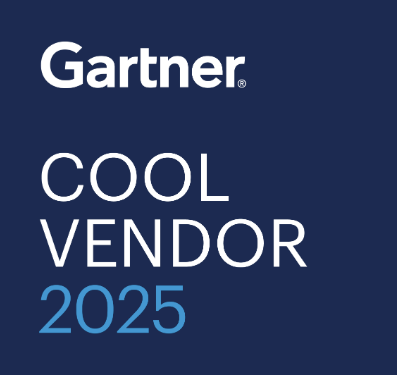Share this
Securing the Future: Exploring the Medical Device Security Market
by Charlie Treadwell on Dec 13, 2022 9:08:00 AM
The importance of medical device security cannot be understated in today's increasingly digitized healthcare landscape. With cyber threats on the rise, protecting patient privacy and safety has become a top priority for healthcare providers and organizations. As a result, the medical device security market has seen significant growth and is projected to continue expanding in the coming years. In this article, we will explore the key trends and drivers in the medical device security market, the major players in the industry, and the best practices for ensuring the security of medical devices.
If you're interested in learning more about medical device security and the latest developments in the industry, here are some useful resources to check out:
- Medical Device Cybersecurity for Engineers and Manufacturers by the FDA
- Medical Device Cybersecurity Market - Growth, Trends, COVID-19 Impact, and Forecasts (2021 - 2026) by Mordor Intelligence
- Medical Devices Cybersecurity Market: Global Industry Trends, Share, Size, Growth, Opportunity and Forecast 2021-2026 by IMARC Group
By staying up to date with the latest market trends and following best practices for medical device security, healthcare providers and organizations can better protect themselves and their patients from cyber threats.
Medical Device Security Market Overview
The medical device security market refers to the various products and services that are designed to ensure the security of medical devices and protect patient privacy and safety. With the increasing prevalence of cyberattacks, the need for medical device security has become more important than ever before.
According to a report by MarketsandMarkets, the global medical device security market is expected to grow at a compound annual growth rate (CAGR) of 8.6% from 2021 to 2026. This growth is being driven by factors such as increasing cyber threats, the rising use of connected medical devices, and the growing adoption of cloud-based solutions in the healthcare industry.
Some of the major players in the medical device security market include Symantec Corporation, Cisco Systems, Inc., IBM Corporation, GE Healthcare, and Philips Healthcare, among others. These companies offer a range of products and services related to medical device security, such as threat detection and response, access control, encryption, and risk management.
If you're interested in learning more about the medical device security market and the latest trends and projections, here are some useful resources to check out:
- Medical Device Cybersecurity Market - Growth, Trends, COVID-19 Impact, and Forecasts (2021 - 2026) by Mordor Intelligence
- Global Medical Device Security Market Size, Share & Trends Analysis Report by Type (Solution, Service), by End-use, by Region, and Segment Forecasts, 2021-2028 by Grand View Research
- Medical Device Security Market Size, Share & Industry Analysis, By Type (Solution and Services), By Device Type (Hospital Medical Devices, Wearable Medical Devices), By End User (Healthcare Providers, Medical Device Manufacturers), and Regional Forecast, by Fortune Business Insights
By understanding the current market size and growth projections and the major players in the industry, healthcare providers and organizations can make more informed decisions when it comes to investing in medical device security solutions.
Medical Device Security Market Segmentation
The medical device security market can be segmented based on various factors such as product type, device type, end-user, and region. Here's a closer look at each of these segments:
Product Type:
- Solutions: This segment includes software solutions such as threat detection and response, access control, encryption, and risk management.
- Services: This segment includes consulting, training, and managed services related to medical device security.
Device Type:
- Hospital Medical Devices: This segment includes medical devices used in hospitals and other healthcare facilities.
- Wearable Medical Devices: This segment includes medical devices that can be worn by patients such as fitness trackers and smartwatches.
End-user:
- Healthcare Providers: This segment includes hospitals, clinics, and other healthcare facilities that use medical devices.
- Medical Device Manufacturers: This segment includes companies that manufacture and distribute medical devices.
Region:
- North America
- Europe
- Asia-Pacific
- Rest of the World
According to a report by Fortune Business Insights, the solutions segment is expected to dominate the medical device security market in the coming years, while the hospital medical devices segment is expected to be the largest device type segment. In terms of end-users, healthcare providers are expected to be the largest segment, driven by the increasing adoption of medical devices in hospitals and other healthcare facilities.
If you're interested in learning more about the segmentation of the medical device security market and the latest trends and projections for each segment, here are some useful resources to check out:
- Global Medical Device Security Market Size, Share & Trends Analysis Report by Type (Solution, Service), by End-use, by Region, and Segment Forecasts, 2021-2028 by Grand View Research
- Medical Device Security Market Size, Share & Industry Analysis, By Type (Solution and Services), By Device Type (Hospital Medical Devices, Wearable Medical Devices), By End User (Healthcare Providers, Medical Device Manufacturers), and Regional Forecast, by Fortune Business Insights
- Medical Device Cybersecurity Market - Growth, Trends, COVID-19 Impact, and Forecasts (2021 - 2026) by Mordor Intelligence
By understanding the various segments of the medical device security market and the latest trends and projections for each segment, healthcare providers and organizations can make more informed decisions when it comes to investing in medical device security solutions that best fit their needs.
Key Challenges in the Medical Device Security Market
Despite the growing demand for medical device security solutions, there are several key challenges that healthcare providers and organizations face when it comes to implementing these solutions. Here are some of the key challenges in the medical device security market:
- Lack of Standardization: There is currently no universal standard for medical device security, which can make it difficult for healthcare providers to evaluate and compare different solutions.
- Complexity of Medical Devices: Medical devices are becoming increasingly complex and interconnected, which can make it difficult to identify and address potential vulnerabilities.
- Limited Budgets: Many healthcare providers and organizations have limited budgets for investing in medical device security solutions, which can make it challenging to implement comprehensive solutions.
- Lack of Awareness: There is still a lack of awareness among healthcare providers and organizations about the importance of medical device security and the potential risks associated with insecure devices.
To address these challenges, it is important for healthcare providers and organizations to stay up to date with the latest developments and best practices in medical device security. By doing so, they can better understand the risks associated with insecure devices and make more informed decisions about investing in medical device security solutions that best fit their needs.
If you're interested in learning more about the key challenges in the medical device security market and the latest strategies for addressing these challenges, here are some useful resources to check out:
- Challenges in Medical Device Cybersecurity by HealthITSecurity
- The Top Challenges Facing Medical Device Cybersecurity Today by HIT Consultant
- Cybersecurity in Healthcare: Addressing the Top 3 Challenges by Hitrust
By understanding the key challenges in the medical device security market and the latest strategies for addressing these challenges, healthcare providers and organizations can make more informed decisions when it comes to investing in medical device security solutions that best fit their needs.
Future Outlook and Opportunities in the Medical Device Security Market
Looking ahead, the future of the medical device security market looks bright. The market is expected to grow significantly in the coming years, as more healthcare providers and organizations recognize the importance of securing medical devices and invest in solutions to address this critical need.
One of the key drivers of growth in the medical device security market is the increasing prevalence of cyberattacks targeting healthcare providers and organizations. As these attacks become more frequent and sophisticated, healthcare providers and organizations are recognizing the need to invest in comprehensive medical device security solutions to protect patient privacy and safety.
Another key trend in the medical device security market is the increasing adoption of cloud-based solutions. Cloud-based solutions offer several benefits over traditional on-premises solutions, including scalability, flexibility, and improved security. As more healthcare providers and organizations move their medical device security solutions to the cloud, the market for these solutions is expected to continue to grow.
Finally, the medical device security market is also benefiting from the increasing adoption of artificial intelligence (AI) and machine learning (ML) technologies. These technologies offer several benefits for medical device security, including the ability to identify and respond to potential security threats in real-time.
If you're interested in learning more about the future outlook and opportunities in the medical device security market, here are some useful resources to check out:
- Medical Device Security Market Size Worth $7.6 Billion By 2026 by Grand View Research
- Global Medical Device Cybersecurity Market 2020-2025 by ResearchAndMarkets.com
- 5 Medical Device Cybersecurity Predictions for 2021 by Medical Device and Diagnostic Industry
By staying up to date with the latest trends and opportunities in the medical device security market, healthcare providers and organizations can better understand the potential benefits of investing in comprehensive medical device security solutions to protect patient privacy and safety.
Conclusion
In conclusion, the medical device security market is a critical and growing segment of the healthcare industry. As cyberattacks become more frequent and sophisticated, healthcare providers and organizations must take steps to secure their medical devices and protect patient privacy and safety. By investing in comprehensive medical device security solutions and staying up to date with the latest trends and opportunities in the market, healthcare providers and organizations can better protect themselves and their patients from cybersecurity risks.
If you're interested in learning more about the medical device security market, here are some useful resources to check out:
- Medical Device Security: FDA Needs to Ensure That Industry Follows Cybersecurity Practices by Government Accountability Office
- Medical Device Cybersecurity for Engineers and Manufacturers" by the National Institute of Standards and Technology
- The State of Medical Device Cybersecurity: 2020 by MedTech Intelligence
By staying informed and proactive about medical device security, healthcare providers and organizations can play a crucial role in protecting patient privacy and safety in an increasingly digital world.
Share this
- Enterprise Cybersecurity (52)
- Zero Trust (21)
- Microsegmentation (13)
- Elisity (7)
- Enterprise Architecture Security (7)
- Lateral Movement (7)
- Identity (5)
- Network Security (5)
- Ransomware (5)
- Remote Access (4)
- Elisity Release (3)
- Cyber Resilience (2)
- Identity and Access Management (2)
- Cybersecurity Healthcare (1)
- Forrester (1)
- Information Security (1)
- MITRE (1)
- December 2025 (1)
- November 2025 (3)
- October 2025 (5)
- September 2025 (4)
- August 2025 (5)
- July 2025 (5)
- June 2025 (5)
- May 2025 (4)
- April 2025 (5)
- March 2025 (6)
- February 2025 (3)
- January 2025 (5)
- December 2024 (4)
- November 2024 (5)
- October 2024 (7)
- September 2024 (5)
- August 2024 (3)
- July 2024 (4)
- June 2024 (2)
- April 2024 (3)
- March 2024 (2)
- February 2024 (1)
- January 2024 (3)
- December 2023 (1)
- November 2023 (1)
- October 2023 (2)
- September 2023 (3)
- June 2023 (1)
- May 2023 (3)
- April 2023 (1)
- March 2023 (6)
- February 2023 (4)
- January 2023 (3)
- December 2022 (8)
- November 2022 (3)
- October 2022 (1)
- July 2022 (1)
- May 2022 (1)
- February 2022 (1)
- November 2021 (1)
- August 2021 (1)
- May 2021 (2)
- April 2021 (2)
- March 2021 (3)
- February 2021 (1)
- November 2020 (2)
- October 2020 (1)
- September 2020 (1)
- August 2020 (3)




Comments (1)